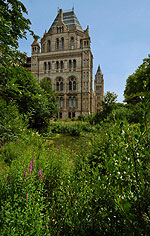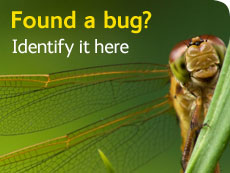Catching flies in the Natural History Museum
Watch fly researcher Zoe Adams catching flies in the Natural History Museum.
The project

The Wildlife Garden, a lush haven in the Museum's grounds.
Collecting blowflies in the Wildlife Garden helps Museum scientists and the police with their forensic work.
What is forensic entomology?
Forensic Entomology uses insect evidence recovered from a corpse to help investigate crime scenes. Typically insects are used to estimate how much time has passed since a person died, known as the post mortem interval (PMI). All corpses attract insects, the first arriving within hours of death. By finding out the age of the insects living on the corpse, you can age the corpse.
Zoe is part of the Museum’s forensic entomology team, which carries out case work for the justice system as well as scholarly research aimed at improving the techniques and knowledge on which the case work is based.
Why are blow flies from the Wildlife Garden needed?
One of their main research aims is to improve the insect growth models (mathematical models of larval growth rates) used in forensic casework, so stocks of live insects (laboratory cultures) of several blowfly species are kept for use in growth experiments.
Unfortunately the flies can quickly adapt to the cultured environment, and begin to exhibit behaviours that are not natural to the wild population. To prevent this happening Zoe periodically refreshes the cultures with wild flies caught in the Museum’s Wildlife Garden.
Toolbox
Follow the Curator of Diptera's blog

What happens behind the scenes in the Museum's Life Sciences Department? Curator Erica McAlister has about 30,000 species of fly to look after, and fieldwork trips at home and abroad. Her life is never dull!
Follow the blog